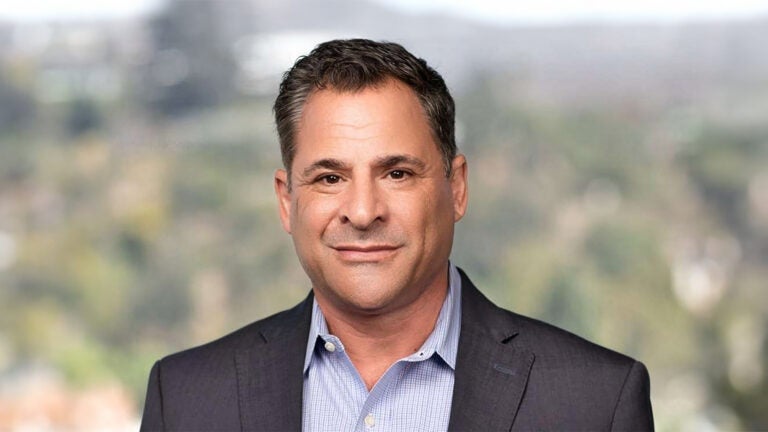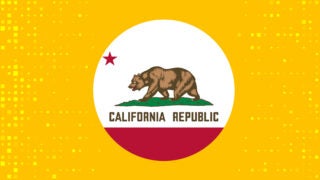
Steve Caplan currently teaches USC Annenberg course on political advertising in the 2024 election. (Photo/Courtesy of Steve Caplan)
Political advertising in the 2024 election: Q&A with USC’s Steve Caplan
The media expert offers insights on the habits of cord-cutting Americans, deepfake videos, and the expected increase in ads that could shape this historic election.
Steve Caplan is no stranger to the high-stakes world of political advertising. With over 20 years of experience at the intersection of politics, advertising and marketing, Caplan brings real-world experience to his teaching at the USC Annenberg School for Communication and Journalism. An adjunct instructor, Caplan currently teaches a course on political advertising in the 2024 election.
Caplan is the founder of Message, a strategic communications and marketing firm based in Los Angeles that serves a diverse clientele, including major Fortune 100 brands, nonprofits and public sector clients. He is also a former partner for GMMB, the agency of record for Barack Obama’s 2008 presidential campaign.
Caplan spoke with USC News about how advancements in technology and shifts in media consumption have influenced campaign ad strategies, and what we can expect to see in the coming months as the 2024 presidential race heats up further.
What stands out to you about this election cycle?
Caplan: This has been a once-in-a-lifetime contest politically, with a former president facing off against a current president followed by a late change at the top of the ticket for Democrats, but it’s also unprecedented in terms of ad spending. Most analysts are predicting that political ad spending is on target to reach new highs, according to all estimates, with the possibility that spending may even blow by earlier estimates. Some projections for spending are suggesting that nearly $17 billion will be spent across all U.S. politics, not just the presidential campaign.
The events of the last month have raised the stakes and will bring in even more campaign spending, as evidenced by recent commitments made by super-billionaires like Elon Musk and Miriam Adelson, who have made pledges to fund super PACs with hundreds of millions of dollars to run campaign advertising between now and November. With major developments recently on the Democratic side of the ticket, expect that trend to continue on both sides as the stakes have risen even higher.
What are signs of a successful ad campaign?
Caplan: There’s one thing that all successful campaigns and brands share: the ability to identify a single key message and stick to it.
In the 2008 Obama campaign, the core message was “change,” with “hope” as a secondary theme. Every piece of content, branding and advertising consistently reflected these themes.
Similarly, in 2016, Donald Trump effectively used the slogan “Make America Great Again,” reinforced by the iconic red hats resulting in a wildly successful branding initiative.
No matter how advanced the tools — AI, pre-roll ads on YouTube, or direct mail — if the core message isn’t consistent and clear, the campaign’s efforts will fall short.
What trends are you paying close attention to in the lead-up to Election Day?
Caplan: As we approach Election Day, several key trends are standing out, each with significant implications for both the political landscape and the media industry.
First, the sheer scale of political spending — projected to reach a staggering $17 billion — is unprecedented. This isn’t just a number; it’s a force that will reshape our media ecosystem. Local news channels and broadcasters, long struggling in the digital age, are poised for a much-needed financial boost. Despite the digital revolution, traditional broadcast TV remains the primary recipient of political ad dollars, underlining its enduring influence in shaping public opinion.
Second, the rise of streaming services and connected television platforms like Netflix, Hulu, Disney+ and Amazon Prime is revolutionizing political advertising. As these platforms introduce ad-supported tiers, they’re opening up new frontiers for political messaging. This shift demands a recalibration of ad strategies. The days of low-budget, direct-to-camera political ads are waning. Instead, we’re likely to see a surge in high-production value, narrative-driven content that seamlessly integrates with the premium viewing experience these platforms offer.
Third, the intersection of entertainment, media and politics is becoming increasingly blurred, particularly in the streaming space. This convergence presents both challenges and opportunities. Political campaigns must now think like content creators, crafting messages that resonate with specific audience segments based on their viewing preferences. For instance, political ads targeted at rom-com enthusiasts might adopt a more emotive, relationship-focused approach, while those aimed at action movie fans might emphasize strength and decisiveness.
Fourth, the sophisticated use of data and algorithms by streaming giants is transforming political targeting. These platforms aren’t just content providers; they’re data powerhouses. Political advertisers and media buyers are leveraging this wealth of information to micro-target audiences with unprecedented precision. This raises important questions about privacy, the ethics of data use in political campaigning and the potential for creating echo chambers that reinforce existing beliefs.
Perhaps one of the most talked-about technological advancements is artificial intelligence. What opportunities and threats do AI present for political advertising in elections?
Caplan: AI is really a double-edged sword for political advertising. On one hand, it’s opening up amazing possibilities for personalization and efficiency. Campaigns can now create hyper-targeted ads that resonate with specific voter groups, and they can do it at scale. It’s also making ad spending more efficient and allowing for quick responses to breaking news.
But there’s a flip side — and it’s a big one. We’ve already seen AI used to spread misinformation in campaigns, both here in the U.S. and abroad. The deepfakes and AI-generated content we’re seeing are getting really good. It’s becoming harder for voters to know what’s real and what’s not.
There’s also the privacy angle to consider. The level of data analysis needed for this kind of targeting raises some serious questions about voter privacy.
I think the biggest challenge we’re facing is how to harness the benefits of AI in political advertising while protecting the integrity of our elections. It’s not just about the tech — it’s about ethics, regulations and voter education. We need to figure out how to use AI responsibly in politics, or we risk undermining the very democratic processes we’re trying to engage in.
Where does social media fit into this?
Caplan: Social media is really at the center of the political advertising challenge we’re facing. These platforms have become the primary battleground for campaigns, but they’re operating without the transparency rules we have for traditional media like TV and radio.
The big issue is that social media companies are largely self-regulating when it comes to political ads. A recent study by Mozilla and Check First showed that many platforms’ ad transparency tools are seriously lacking. They often provide incomplete data, have broken search functions and are difficult to use effectively. This makes it hard for voters, researchers and watchdogs to track who’s behind the ads they’re seeing.
Some platforms are doing better than others. For instance, TikTok doesn’t allow political ads at all. But others, like X (formerly Twitter), have scaled back their election integrity efforts, which is concerning.
What’s particularly worrying is the potential for foreign interference. We’ve already seen examples in Europe of large-scale disinformation campaigns reaching millions of users, with platforms failing to identify and label these as political ads in time.
With the 2024 election coming up fast and no new regulations likely to be in place, it’s crucial that these platforms step up their game in providing better transparency tools. Without that, we’re leaving voters vulnerable to manipulation and deception, which poses a real threat to the integrity of our democratic process.



